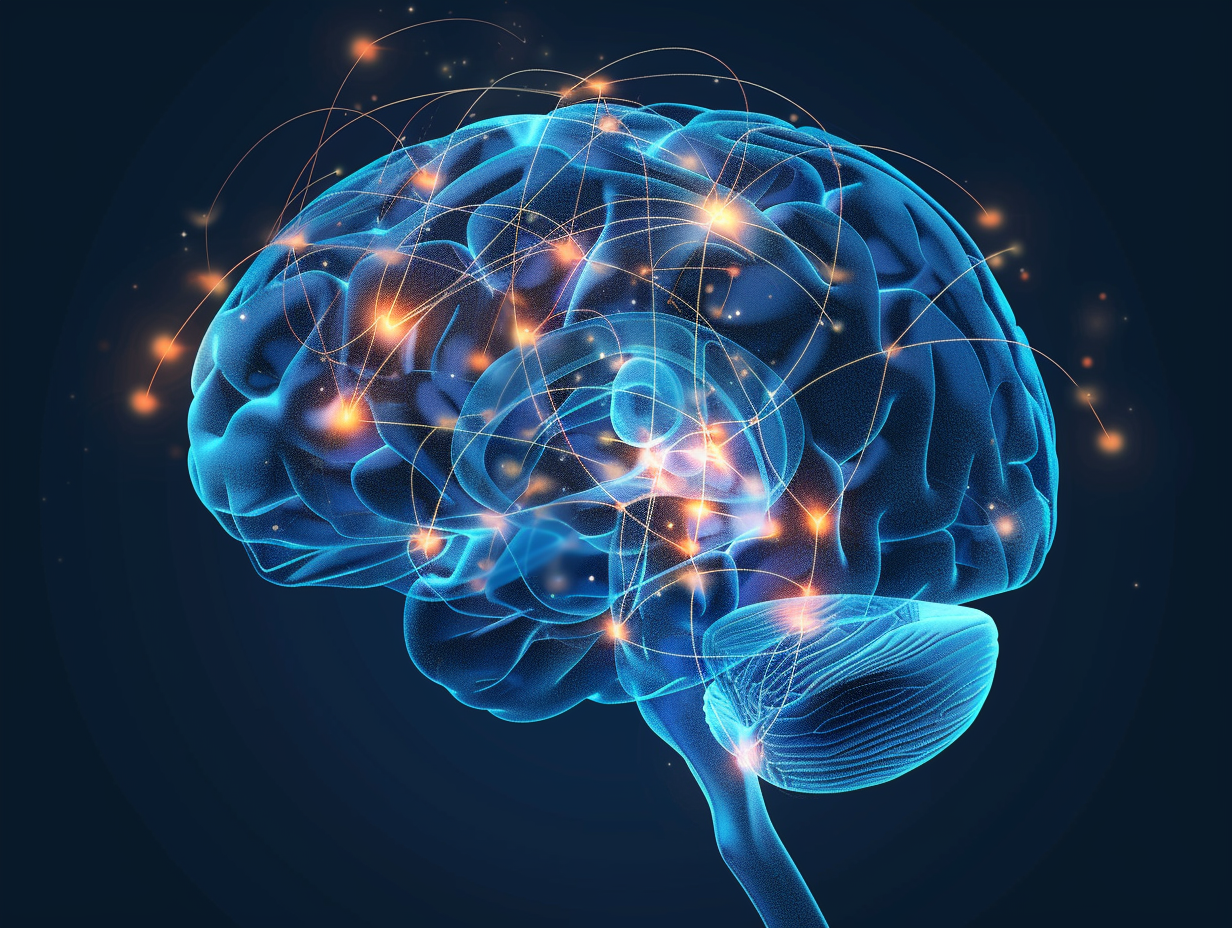Alzheimer disease (AD) is the most widespread type of dementia, which incites millions of people across the world. Most individuals consider Alzheimer as a loss of memory but researchers are discovering unexpected initial symptoms that emerge many years before the onset of cognitive impairments. The smell dysfunction reduced ability to smell is one of the most ignored symptoms.
A recent article published in Nature Communications (2025) illuminates the reasons why this is the case. Scientists found that the destruction of a small part of the brain in the locus coeruleus (LC) caused the destruction of noradrenergic axons in the olfactory bulb. This trauma is manifested even before the formation of amyloid plaques a characteristic of Alzheimer. Their results indicate that the use of smell tests might emerge as an effective instrument of early detection.
The Locus Coeruleus has a role to play
A locus coeruleus is a small brainstem region but it has a disproportionately large impact. It synthesizes noradrenaline which is a neurotransmitter that controls attention, sleep, arousal, and sensory processing such as smelling.
This is one of the systems disrupted first in Alzheimer. The researchers found out that the loss of the LC axons in the olfactory bulb happens in the course of the disease process early when the memory issues are not manifested yet. This is the reason why at least 85 percent of Alzheimer patients suffer irritation of their smell at the early stages.

Key Findings of the Study
Premature Axon Loss comes first followed by the development of plaques.
Through mouse models, it was demonstrated that the degeneration of LC axons in the olfactory bulb started as early as the two months of age long before the amyloid plaque accumulation.
Microglia Attack the broken axons.
It was found that the immune cells of the brain (microglia) actively eat (phagocytes) these damaged axons. This is a normal process of clearing that is usually beneficial to the brain health, but is also a contributory factor to the loss of smell in Alzheimer.
There is a deficiency in the Noradrenaline Release.
The experiment used a measure of noradrenaline when odors were being stimulated. Noradrenaline shot up in response to smells in healthy mice. In models of Alzheimer, such release was very limited leading to poor odor detection.
The Findings are Evidenced by Human Evidence.
The pattern of LC axons loss was seen in post-mortem analysis of human olfactory bulbs in early stages of the Alzheimer’s disease. Moreover, the patients with mild cognitive impairment had increased microglial activity in the olfactory bulbs as indicated by brain scans (TSPO-PET) similar to that of the mouse.
Why This Matters
These findings are important because they serve two purposes:
Early Diagnosis: The current forms of treatment of Alzheimer are more effective when early onset is made. Because the loss of smell is observed several years prior to the decline in memory, simple olfactory examinations alongside brain imaging might be used to identify the presence of Alzheimer earlier than ever.
New Therapeutic Targets: Researchers can come up with a drug to protect such neural connections and save smell through identifying the mechanism by which they are destroyed, microglial over-phagocytosis of LC axons.
The use of Olfactory Dysfunction as a Biomarker
Most doctors have traditionally depended on the use of memory tests in making diagnoses of Alzheimer. However, this paper highlights the importance of the fact that odor examination may act as an effective, non-invasive biomarker. Simple smell recognition tests such as coffee or vanilla might indicate those at risk long before it is too late to do anything.
Besides, new imaging tools, including TSPO-PET, can show the activity of the microglia in the olfactory bulb, providing a biological measure to clinicians to prove the occurrence of the early changes in the state of Alzheimer.
Broader Implications in the Health of the Brain
The results are also consistent with studies in the field of Parkinson to whose case smell loss has been a long-established initial symptom. This implies that olfactory impairment can be a common initial sign of neurodegenerative disorders. Researching the process of locus coeruleus degeneration, researchers may identify common processes in Alzheimer disease and other diseases.
The Implications of this upon patients and families
Although Alzheimer cannot be cured at this point, early diagnosis will allow the family to prepare more efficiently, obtain treatment earlier, and make lifestyle choices in favor of brain health. The acknowledgment of the loss of smelling as more than a minor inconvenience would provide the patients with some precious additional time of treatment.
In case of a sudden drop in smell, particularly in combination with slight memory loss, it can be of interest to seek neurologist consultation. Although not conclusive, it might be among the first red flags of the Alzheimer disease.
Conclusion
This is a revolutionary study that shows that the loss of smell in Alzheimer is not merely a side effect but an important initial indicator of brain alterations. The destruction of the locus coeruleus and its noradrenergic axons in the olfactory bulb starts even before the classical signs of Alzheimer.
With the emphasis on olfactory testing and neurocircuit imaging, physicians would be able to find out the presence of Alzheimer prematurely, which would allow more effective interventions and prevention measures.
The sense of smell is not to be underestimated, and it may be the sense that can make us fight dementia.
Reference:
Meyer, C. et al. (2025). Early Locus Coeruleus noradrenergic axon loss drives olfactory dysfunction in Alzheimer’s disease. Nature Communications, 16:7338. https://doi.org/10.1038/s41467-025-62500-8

